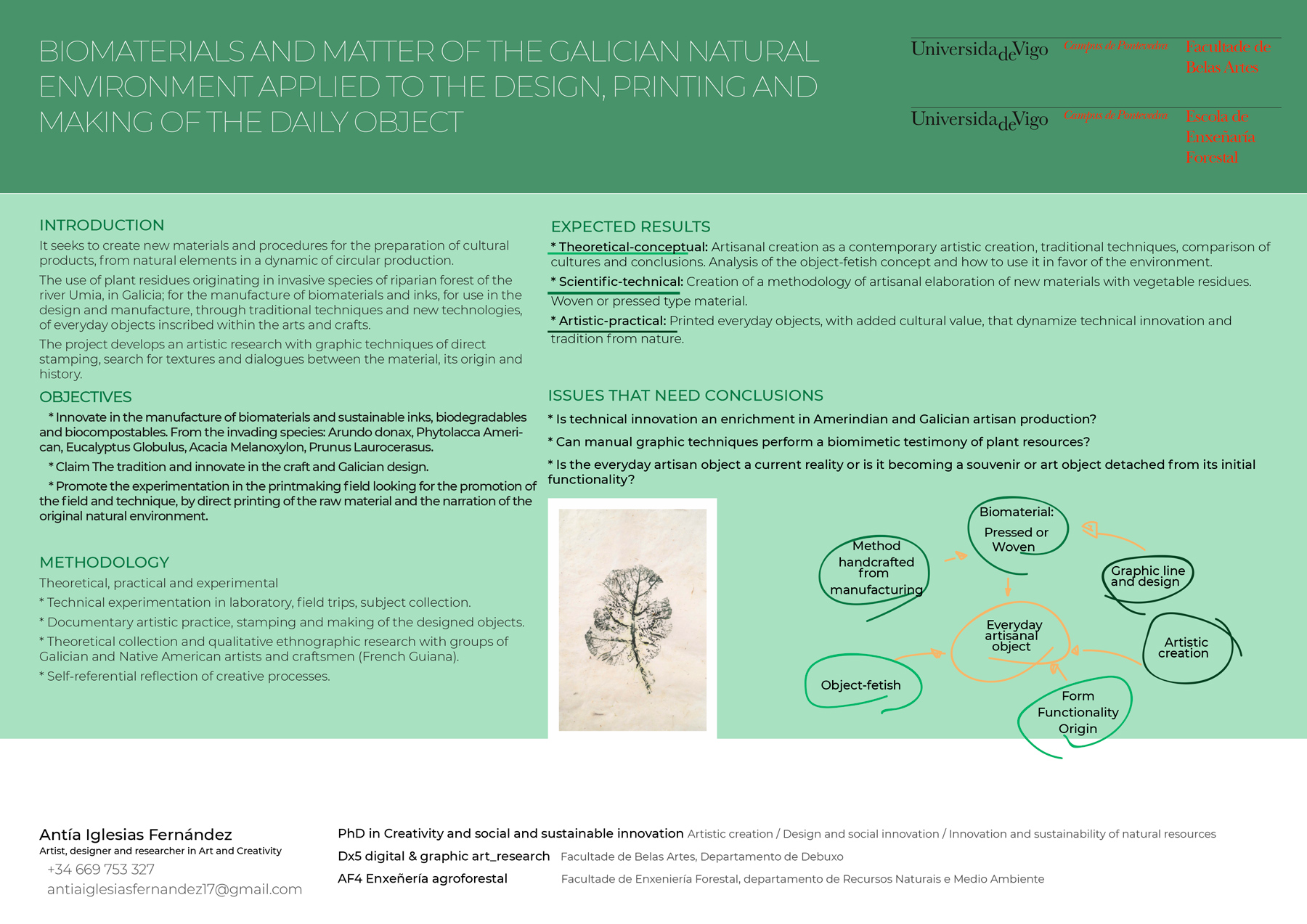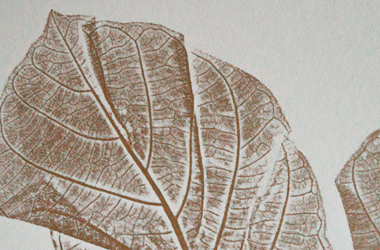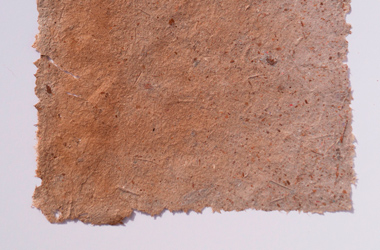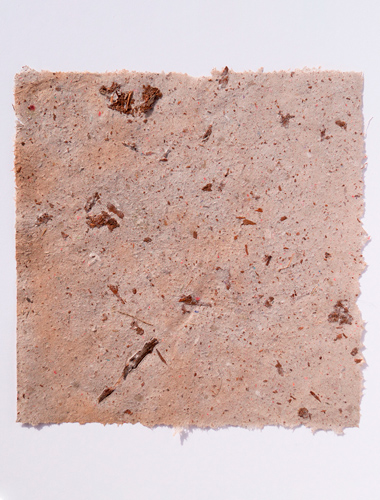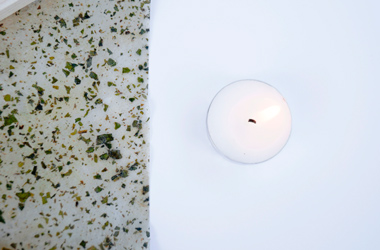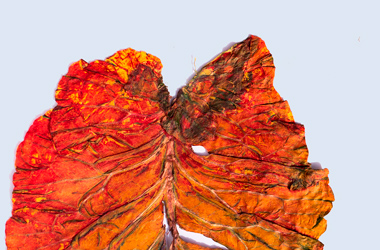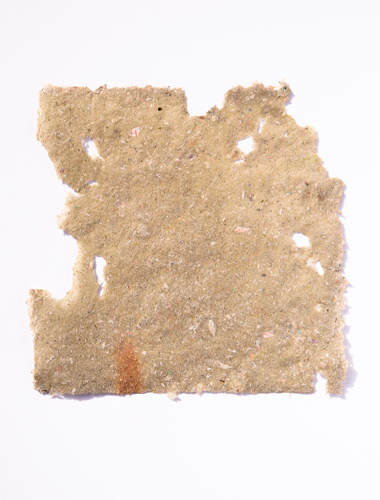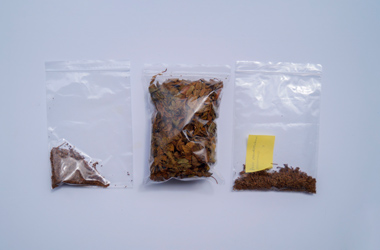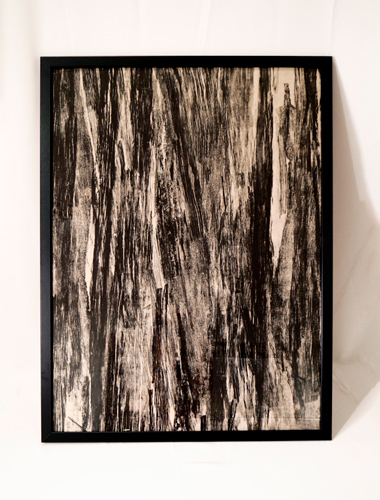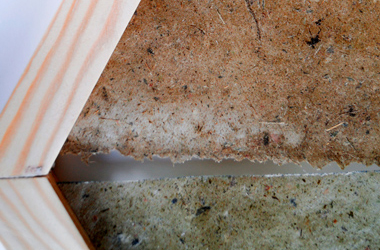Biomaterials and matter from Galician natural environment applied to design, printing and manufacturing
the everyday object
Thesis project, work in progress (November 2020 - to be finished by 2024)
Main objective: to complete a circle.
To find a use within the world of art for the waste of invasive species, through traditional techniques,
creating a discourse about the feedback techniques, creating a discourse about the tradition-contemporariness feedback in the artistic-scientific-artisan
artistic-scientific-artisanal, between Galicia and other communities.
Elaboration of supports and pigments to design and print, in a personal artistic investigation, and to elaborate
objects for everyday use, bordering between traditional-ritual, artistic and everyday objects.
Sustainability & innovation
Researching throught new forms of creation with traditional knowledge
Different aproaches to the concepts of Traditional objects
everyday life objects and objects from the art world.
The object looks like a way of conexion between the environment and the intimate personal life, throught them it could be found the space where we all should inhabit.
Limitless possibilities of interactions between disciplines. Through a triple approach, the project responds to the following methodologies: scientific-technical, artistic-practical and theoretical-conceptual.
These three dimensions of research must work together, thus feeding back into the processes and linking disciplines.
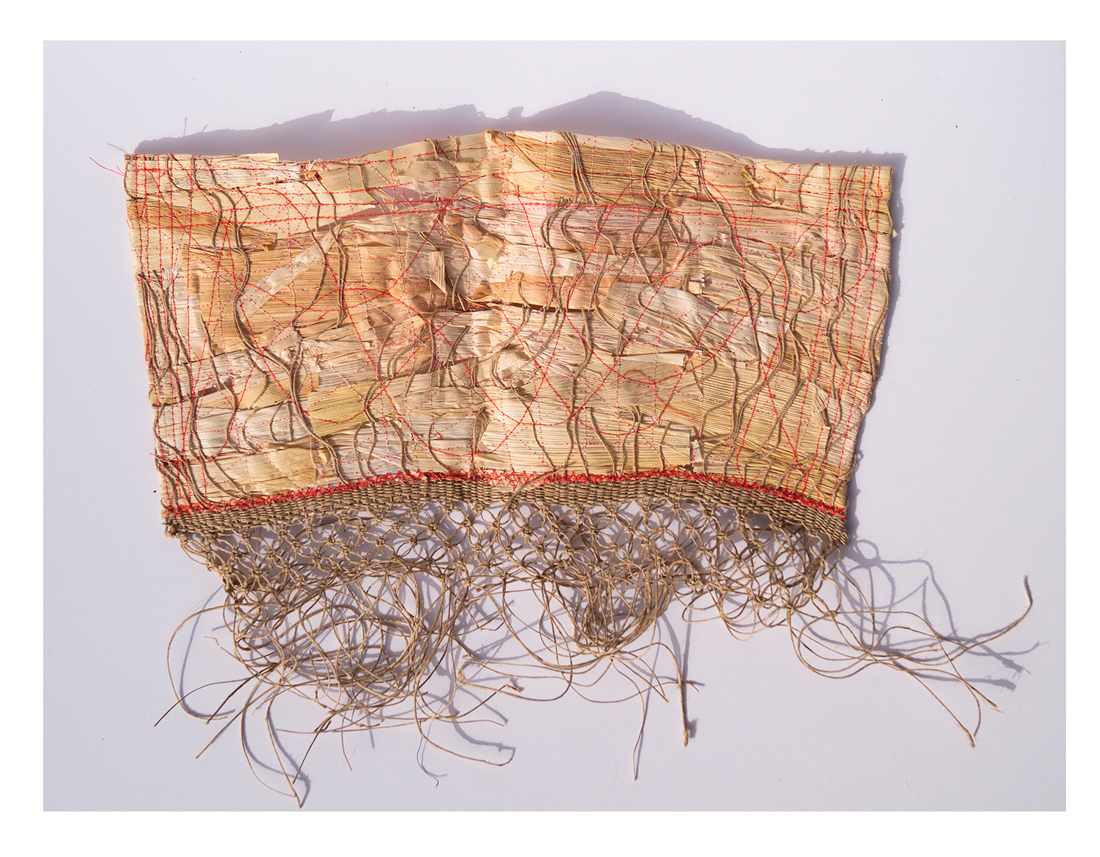
Sustainability & innovation
Principal project structure and methodologies
In the development of the project, three types of research have been carried out in parallel, corresponding to the three main axes of the thesis:
- Theoretical-conceptual: the subject matter
- Scientific-technological: the material
- Artistic-practical: the matrix
To find out more about each part of the project in depth, please consult the following sections
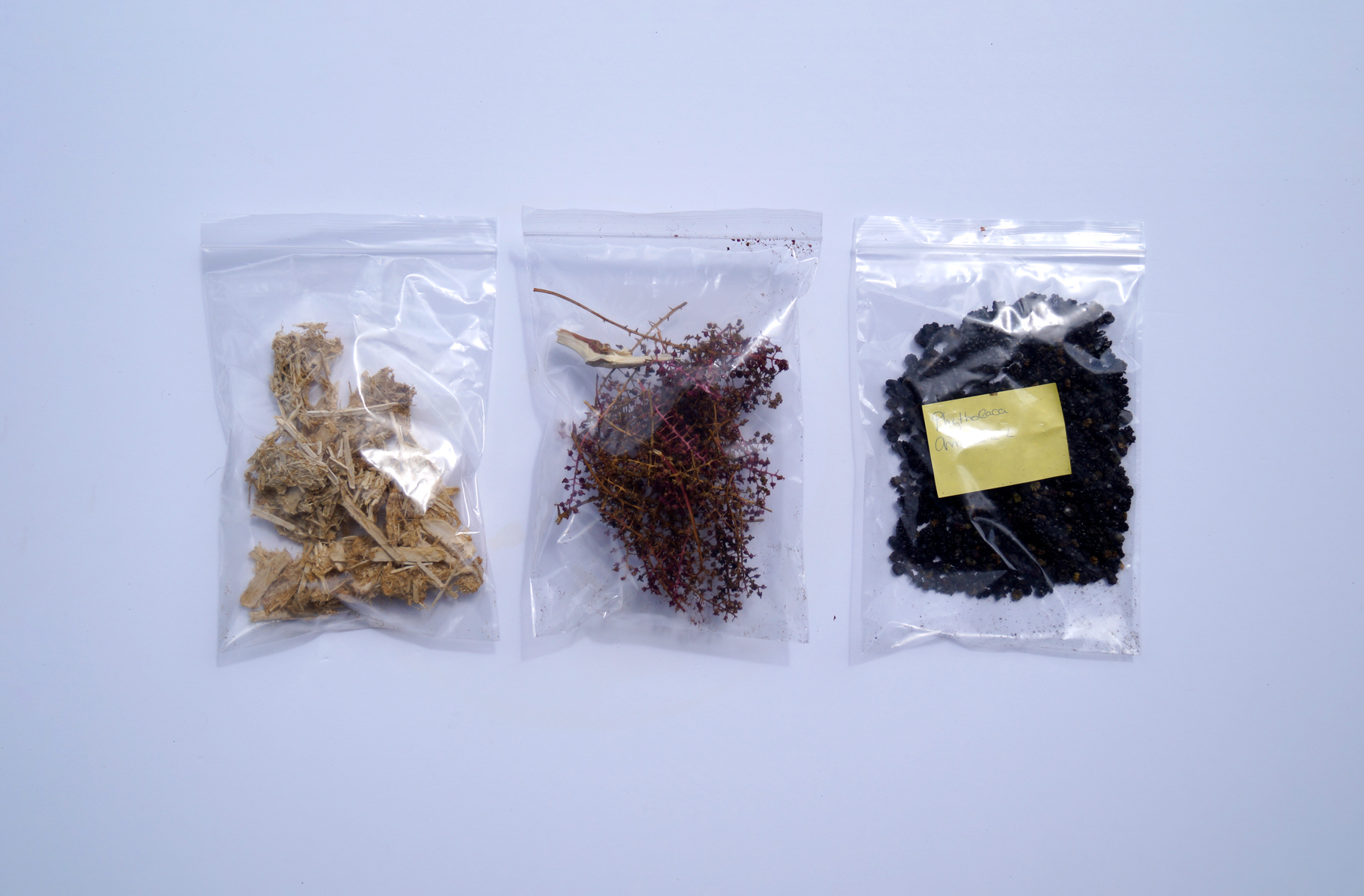
Scientific-technologycal
research methodology
Finding a use in the world of art for plant waste from invasive species in Galicia. Method of handmade elaboration of a woven or pressed support with the selected species.

Artistic-practical
research methodology
To create daily design objects that encourage experimentation in printmaking and graphic techniques. Direct printing, monotype and lasser cutted xylography.
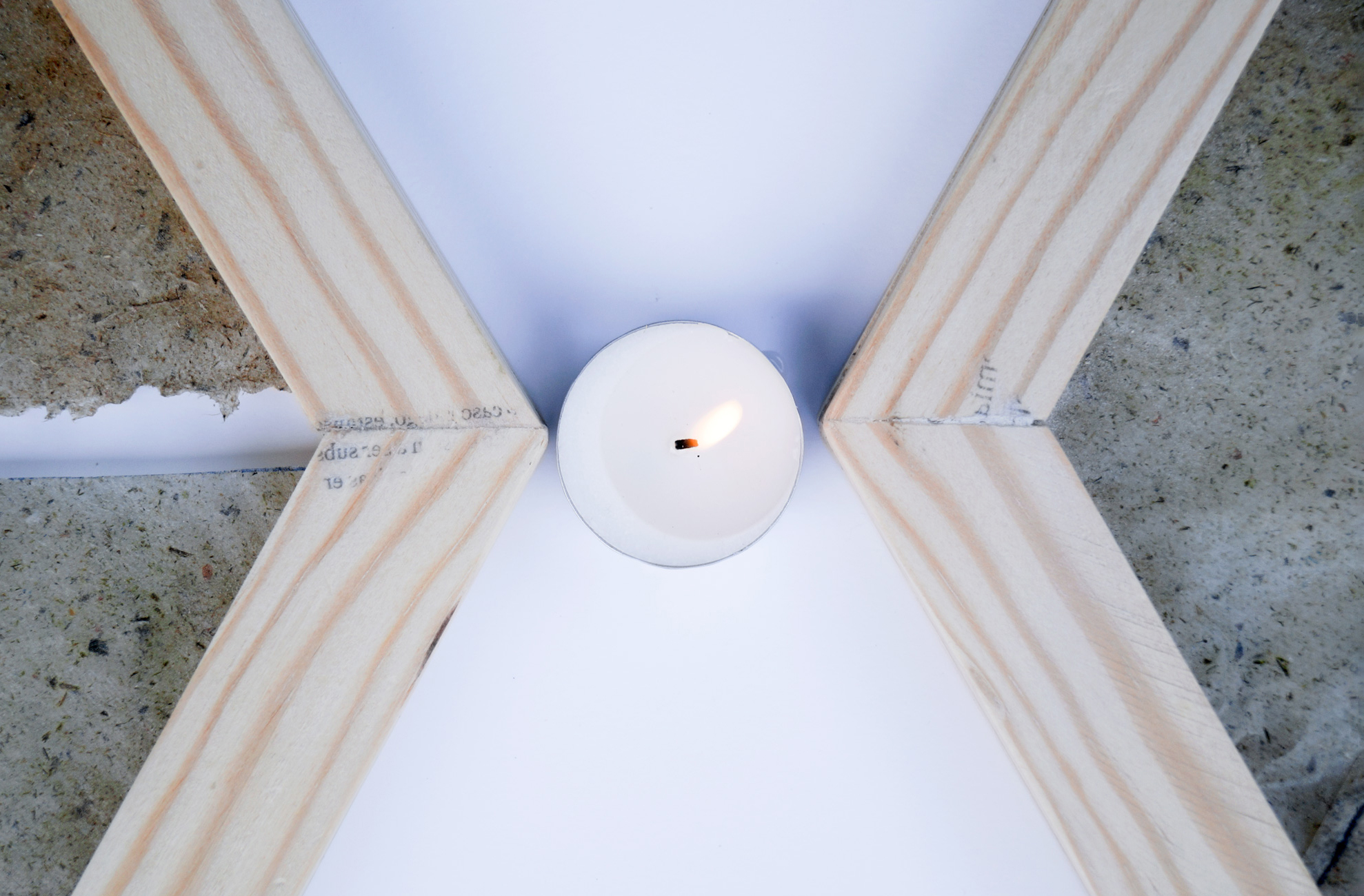
Theorical-conceptual
research methodology
Participatory ethnographic qualitative methodolgy with communities of artists/artisans from different cultures. The role of the creator. The boundaries between useful, ritual and art objects.
Sustainability & innovation
Subprojects around the world
Throughout the years of research, the project has been and will continue to be developed in different locations.
This has allowed us to compare concepts across cultures, learn different techniques and develop artistic experimentation with different influences.
.jpeg)
Galician, Spain, Europe
Through and analisis of the ecosystem where the selected species grow like invasive species. Researching propierties and utilization, ways of reutilization of vegetable waste. Also in contact with artist and artisans that works with natural elements to create objects, linked with traditional techniques and contemporary-crafts.
.jpg)
French Guiana, France, Europe
Learning about/with the indigenous culture that survived the colonization, finding traditions, rituals and usage of natural elements in their creations.
Trying to find different approaches to the object understanding trought art and crafts. The concept of arts in indigenous cultures.
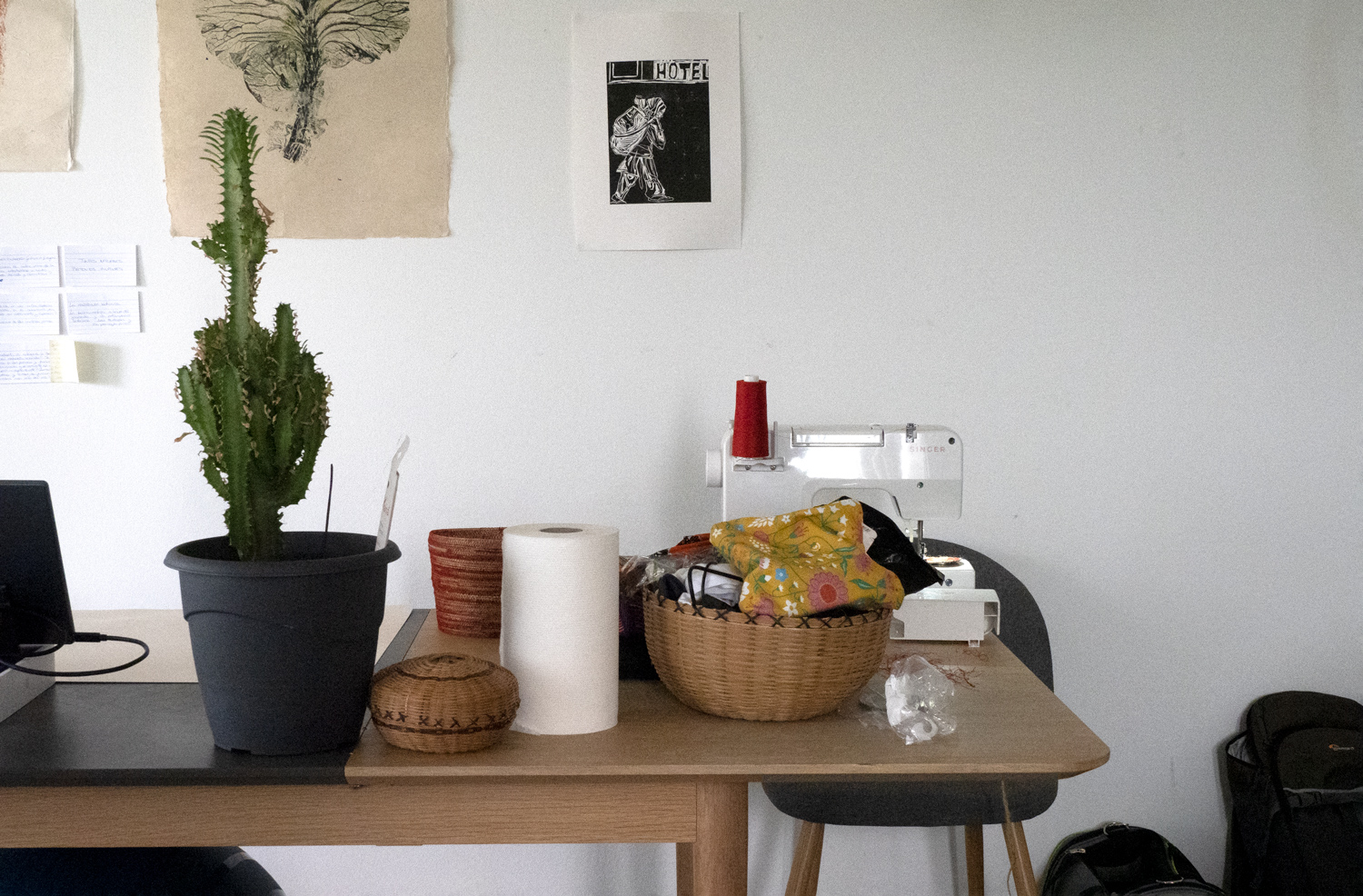
Further destination
Work in progress for the next moments of the researching experience.
What is it about?
Where does an art, design, crafts and natural science research starts?
It all starts with the possible interactions between the disciplines of art, craft, design and the natural sciences. The environment needs the world to change in order to remain healthy, and art and design have something to do about it.
Scientific research
To find a mixed production method (handmade-technological) of a woven or pressed support with natural waste. Weaving, basketry and paper-making.
Analyse ecosystems with presence of specific invasive species, different locations in order to find differences and
similarities in characteristics and derived uses.
Etnographical participative methodology
Networks of contacts, informants, artisan-artists, collaborators.
Qualitative research: interviews, colloquiums, discussion groups.
Photographic record. Observation, analysis, learning and creation.
Artistic researching throught making
To create daily design projects that encourage experimentation in engraving and graphic
in engraving and graphic techniques. Direct printing, monotype and xylography.
Sustainable and environmentally friendly processes.
Fibre testing, weaving, pressing, knotting. Registration and design of the objects.
Conceptual and theorical research
Recommended bibliography:
- Baudrillard, J. (1970). El sistema de los objetos (0 ed.). SIGLO XXI Editores.
- Benjamin, W. (2012). La obra de arte en la era de su reproductibilidad técnica y otros textos (1.a ed.). Ediciones
Godot.
- Berger, J. (2005). Sobre el dibujo. GG.
- Bourgeois, L., & Celant, G. (2011). Louise Bourgeois the Fabric Works. Skira.
- Bourriaud, N., & Lebenglik, F. (2006). Estetica relacional / Relational Aesthetics (Tra ed.). Adriana Hidalgo Editora.
- Cranmer, J. y Zappaterra, Y.: Conscientious Objectives: Designing for an Ethical Message, Mies (Suiza), 2003
- Davy, D. (2011). Comercialización de artesanía indígena y noción de tradición en Guyana Francesa: hacia una
nueva terminología. Mundo Amazónico, 43–66.
- Dufrenne, M. (2018). Fenomenología de la experiencia estética. U. Valencia.
- Fuad-Luke, A. (2021). Design Activism: Beautiful Strangeness for a Sustainable World by Alastair Fuad-Luke
(2009–05-30). Routledge.
- Han, B. (2016). La salvación de lo bello. HERDER.
- H.Spangenberg, J., Fuad-Luke, A., & Blincoe, K. (2010, noviembre 1). Design for Sustainability (DfS): the interface
of sustainable production and consumption. 2010
- Oxman, N., Antonelli, P., Burckhardt, A., & Steiner, H. A. (2020). Neri Oxman: Material Ecology. Museum of Modern
Art.
- Papanek, V. (2021). Disenar Para El Mundo Real: Ecologia Humana Y Cambio Social (produccio Neta). Pol?len
Edicions (el Tinter Sal).
- Shinner, L. (2004). La invención del arte: Una historia cultural. Paidós.
- Worringer, W. (1907). Abstracción y naturaleza.Worringer, W. (1910). Abstraccion y naturaleza. Fondo de Cultura
Económica.
- Yanagi, S. (2020). La belleza del objeto cotidiano. Editorial Gustavo Gili.
- Zygmunt, B., & Rosenberg. (2020). Modernidad Líquida (1.a ed.). Fondo de Cultura Económica.
